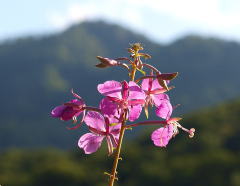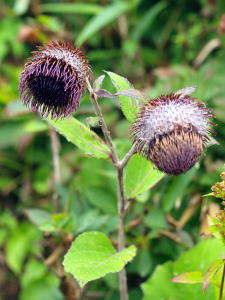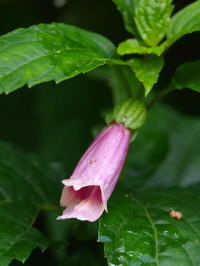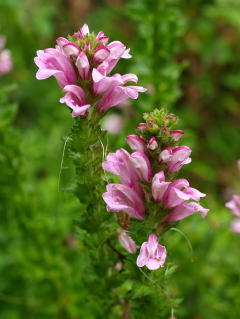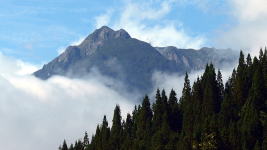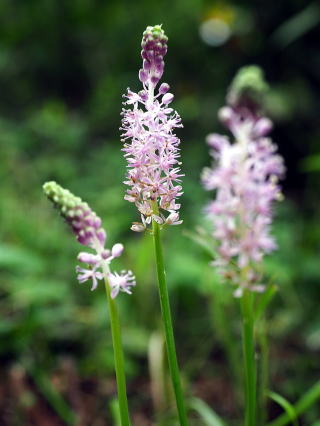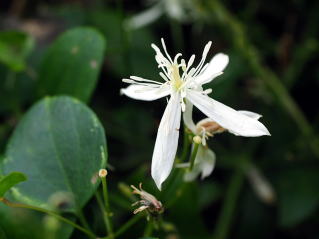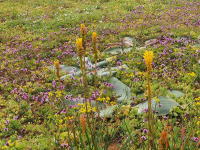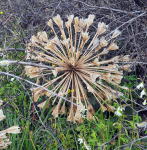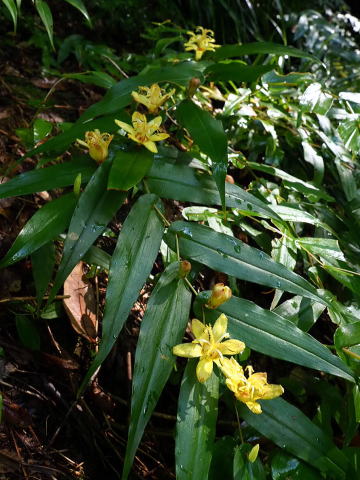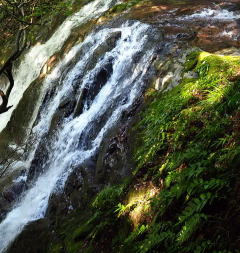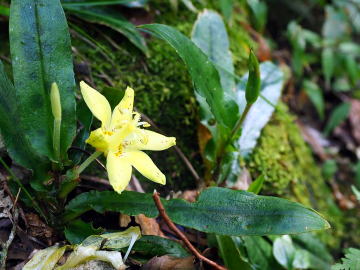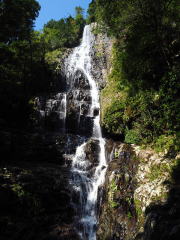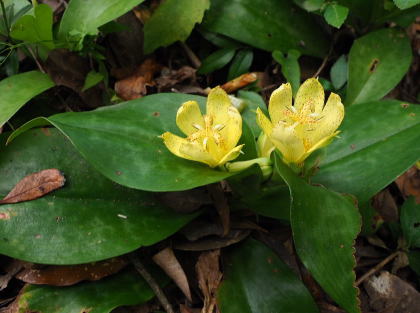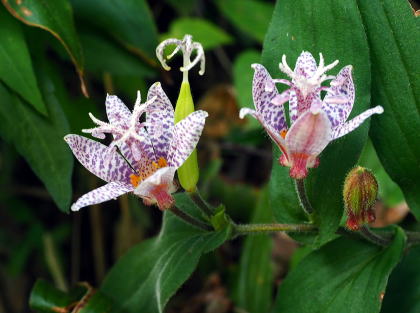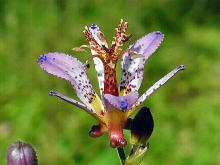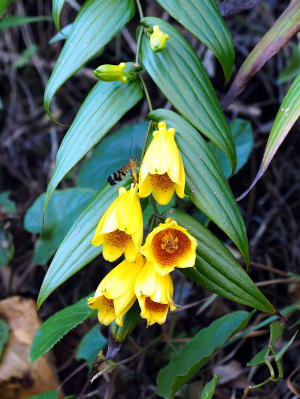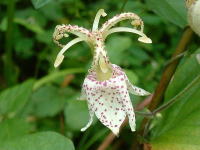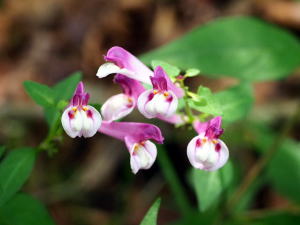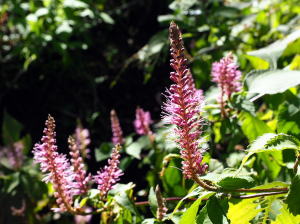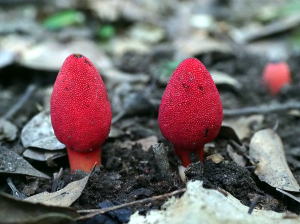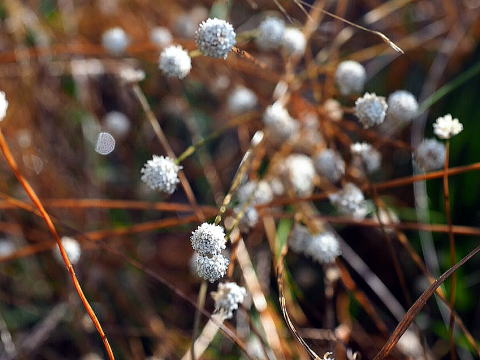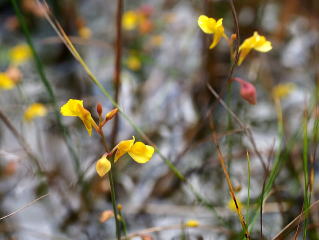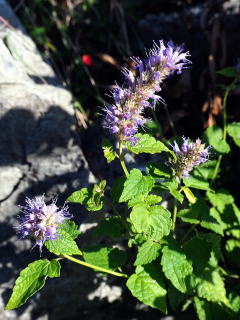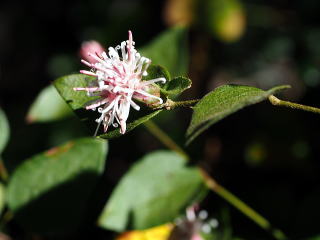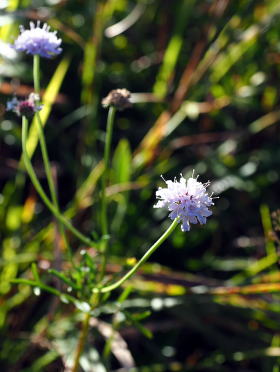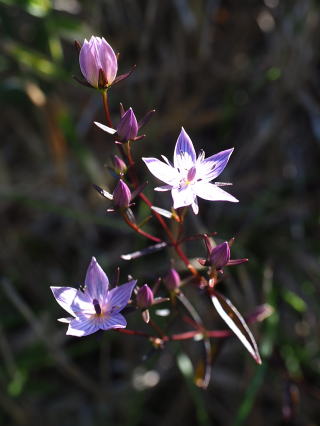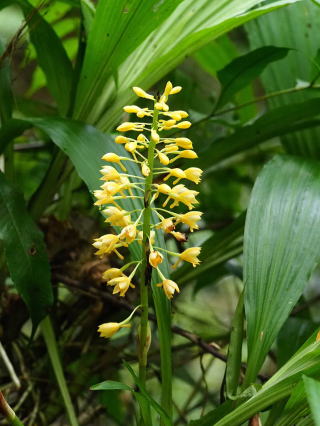Lycoris radiata
("Higan-bana" Cluster lily: Amaryllidaceae)
Every year, around the autumn equinox, she abruptly raises her head out of ground and opens her bright red hair like hydra.
The flower is also called "Manjushage (pradise flower)" due to
blooming during the equinoctial week or called Hell Flower for the petals
looking like hell fire. Instead of children who forget to visit their parent's
grave to mourn, it pays condolence for the parent by blooming on a same
time of the year.
Flower knows the blooming time because it feels the length of the daylight
and/or the temperature difference. Since this flower blooms early in northern
Japan, it seems that the temperature is more possible factor for blooming.
(Hanegi Park, Setagaya,Tokyo) |
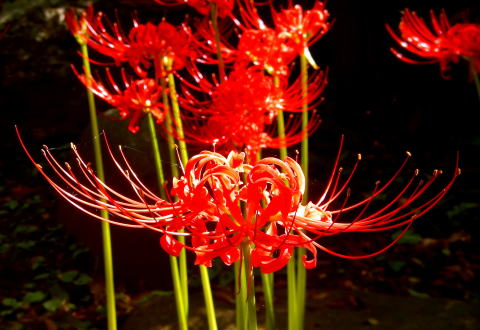 |
There are many flowers belonging to the Amaryllidaceae family. They are Narcissus and Crinum asiaticum, and recently the leeks(used to be in liliaceae). Also amaryllis and agapanthus which were brought in from foreign countries (South Africa) as horticultural species. And amaryllis family in the southern hemisphere blooms around the spring equinox, which is half a year off.
In mid-March, when the neuro coronavirus began to spread in Japan, I flew
to Cape Town, South Africa, in search of Amaryllidaceae in the Southern
Hemisphere. |
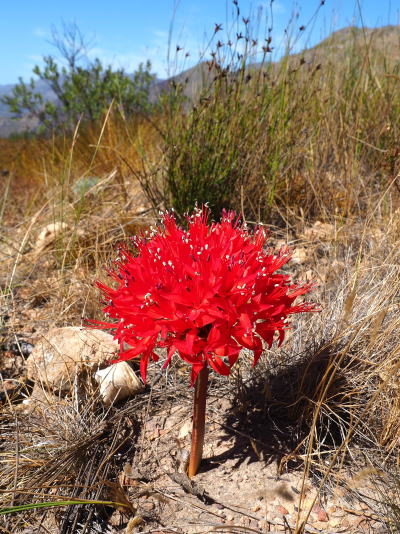 |
Brunsvigia marginata
It grows directly from the ground, and makes a volleyball sized fireball-like
flower with cluster of 3 cm petalrs. The surface of the petals shines looking
like sprinkled with gold powder.
It is a furnis that appears in extremely dry grasslands in late summer.
In fact, there is a lot of wildfire in Cape Province during this time.
Fire caused by friction of branches due to wind or lightning or sometimes
thrown burned cigarettes, burns out the shrub belt such as Protea and Pincushion
(Leucospermum). After that, Amaryllidaceae flowers such as Brunsbugia and
Haemanthus sprout and monopolize sunlight and the nutrients of ash to open
large flowers in abundant areas. And also the nuts of Leucospermum can
be cracked by the fire like eucalyptus and can only germinate.
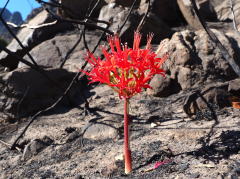 |
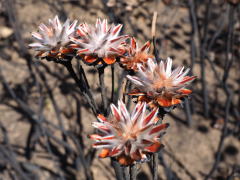 |
| B. marginata in burn marks |
Nuts of Leucospermum opened in flame |
| (Pearl, Western Cape, South Africa ) |
|
| |
|
Spring in 2018 (September) I visited here to see irises. I saw withered
wide leaves and globe withered mysterious flowers. I've been concerned
since then, and I'm looking for an opportunity to return.
The size of the flower is same as basketball (25 to 30 cm) which is the
largest in this genus. This year, I only saw some in the summer withering
field but it could be filled with bosmaniae which makes the field pink
once every some ten years..
(Nieuwoudtville, Western Cape, South Africa) |
Brunsvigia bosmaniae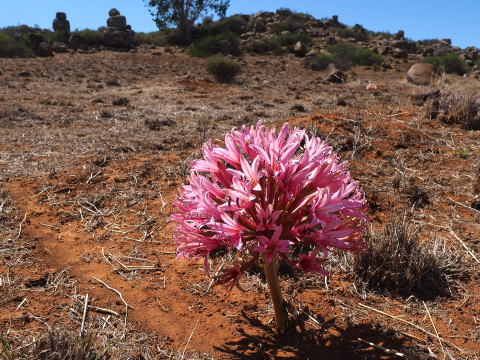 |
|
|
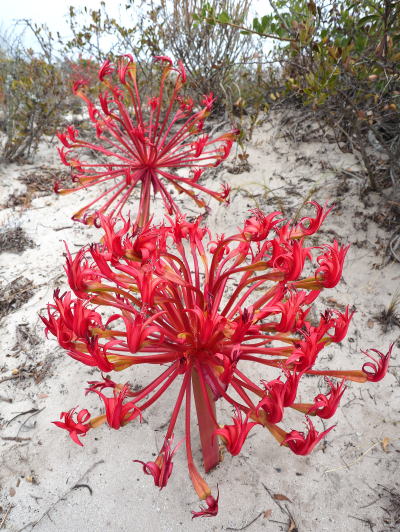 |
← Brunsvigia orientaris
Largest Brunsvigia with a length of 40 to 50 cm. The petals from the stem
are like a candlestick, so it is also called a chandelier lily.
(West Coast National Park, Western Cape, South Africa ) |
|
Brunsvigia elandsmontana |
| |
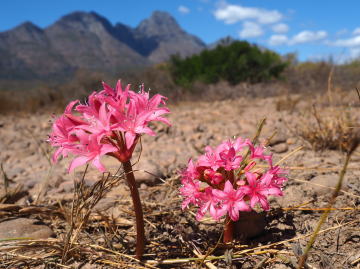 |
| |
Recently discovered in a privately owned Elansburg Nature Reserve. Small
species. Charming and elegant flower that should be said as the princess
of Brunsvigua. |
|
|
|
| Brunsvigia striata |
Crossyne flava |
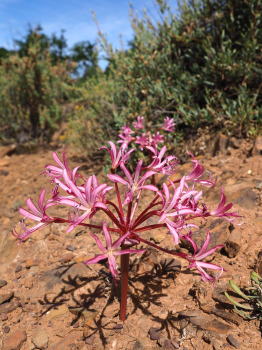 |
Species close to Brunsbugia and bears yellow flowers
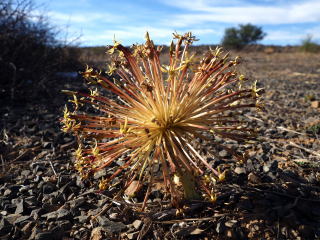
(Nieuwoudtville, Western Cape, South Africa)
← (South of Citrusdale, Western Cape, South Africa) |
Haemanthus makes a flower head like a calligraphy brush, whihe the tip
is red different from Haemanthus albiflos (Elephant's tongue) whose tip
is white.
|
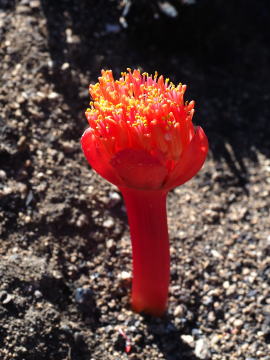 |
|
Haemanthus sanguineus |
|
(at Pearl, Western Cape, South Africa) |
|
| Haemanthus coccineus |
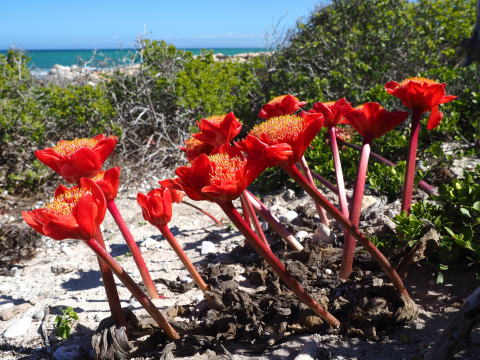 |
| This species has a black pattern on the stalk. |
| (at Agulhas Cape, Western Cape, South Africa) |
|
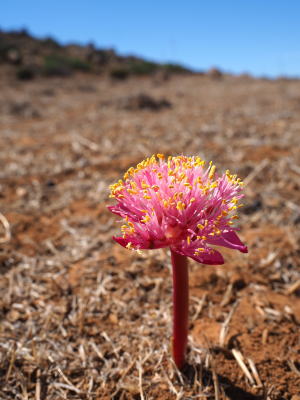 |
Haemanthus barkerae
|
Cute flower. You would want to call it as Princess of Haemanthus. A very
rare species. I found it near the place where I saw Bosmaniae with our
guide, Dr. Manning who was also excited. |
|
|
In South Africa, the cloest kin of Japanese cluster amaryllis is Nerine.
Unfortunately I couldn't find Nerine this time. But instead I found other
one - Amaryllis whose name is "Beautiful maiden"
Amaryllis belladonna
(in the Hotel garden, Stellenbosch, Western Cape)
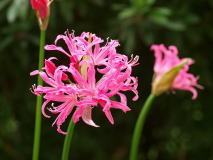 |
Nerine
This is a Japanese holticultre product.
(at Okura Athletic Park, Setagaya, Tokyo) |
|
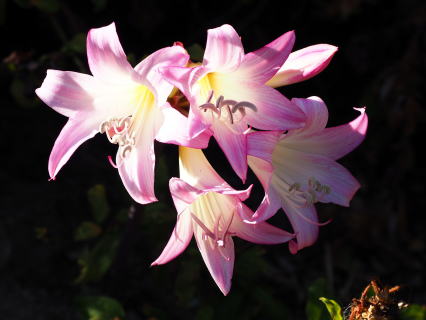 |
| At present South Africa is in the middle of summer. The cities there
are locked down due to rampant of the variant new coronavirum. The trave
industry is completely out of service and lamenting it. While there is
a wonderful orchid called "Desa" in S.A. that blooms in the summer,
I have to leave it for a while until the corona is over. Until then I want
both flowers and people to be safe. |
In the previous issue, I introduced Tamagaga Hototogisu (Tricyrtis latifolia)
and Yamajino Hototogisu (Tricyrtis affinis). A veteran Noh performer who
saw my HP suggests that there are some rare Tricyrtis in Southern Kyushu.
At the beginning of October, I headed for Miyazaki after Typhoon passing
over. |
It is a lesser cuckoo that sings in early summer. Lesser cuckoo is applied
various Chinese letter such as "杜鵑" and "不如帰". It cries
"Kyo, Kyo, Kyokakyo" with a high-pitched voice continueously
from the red throat. So, it is said "Lesser cuckoo screams and spits
blood". For this reason, Japanese Haiku (poet) master Shiki Masaoka
took his pseudonym after his suffering from tuberculosis. He said his determination
as "I will make Haiku poets in the manner like bleeding from my heart"
On the other hand, the flower of the lesser cuckoo is blooming summer to
autumn. Of course, it doesn't screem, but the kanji name is applied "杜鵑草"(toad
lily). This is because that the flower has spots on the petal which looks
like the chest pattern of lesser cuckoo. |
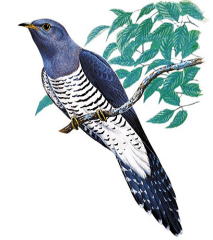 |
Lesser cuckoo
(Image is borrowed from the HP site of Suntory Bird Protection Activity) |
|

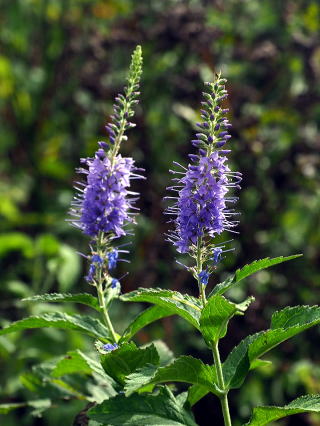
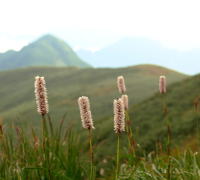 (in the range of Mt. Iide)
(in the range of Mt. Iide)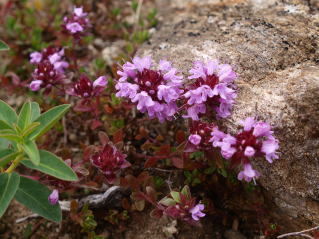
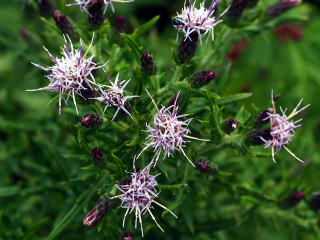
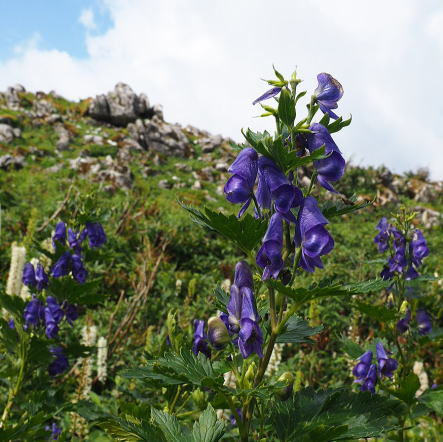
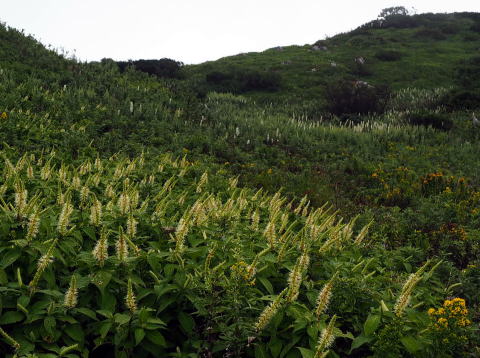
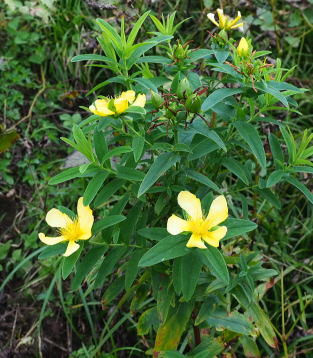
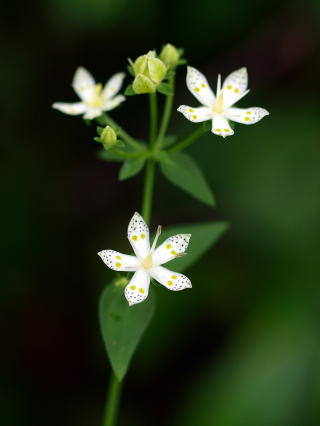
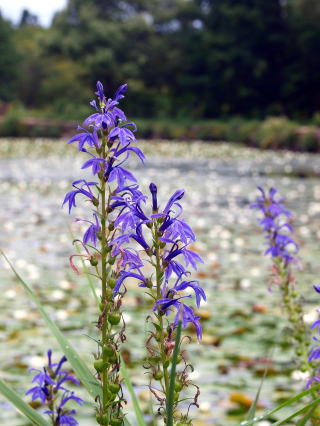
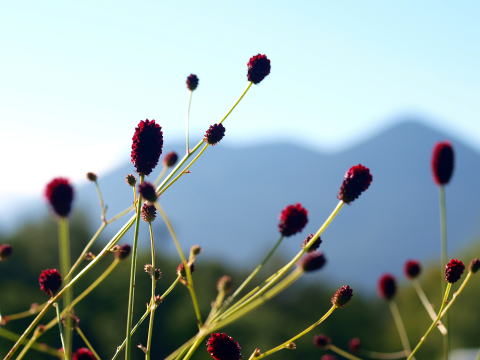
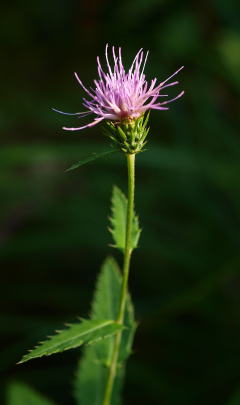
1.jpg)
